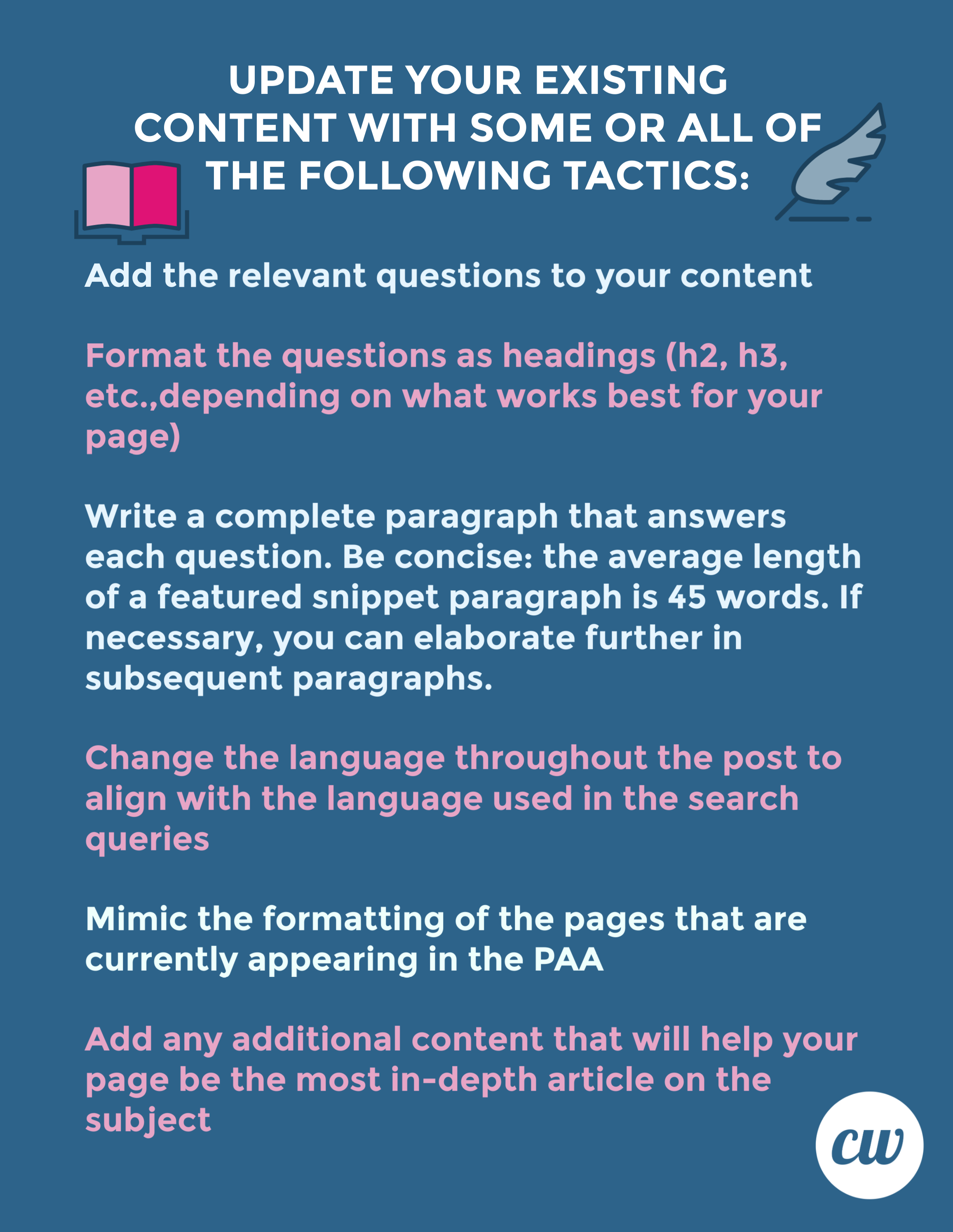
When Should You Update Old Content? Best Practices for Updating Website Content for Businesses
In this guide, we’re breaking down our best practices for updating website content — an essential task for any business looking to stay relevant. We’ve got some easy, actionable advice that’ll revamp your content in no time, ensuring your audience and search engines keep seeing you as the go-to expert in your industry.
Whether you’re a one-person business or a marketing manager, there’s plenty here to help you create and maintain a successful content refresh strategy.
Signs Your Website Needs to Be Updated
The first content refresh step is identifying whether your website needs one. Here are some signs and reasons to refresh your content:
- Outdated Content. If your website’s content looks outdated or doesn’t match current industry trends, it can make your business seem out of touch.
- Not Mobile-Friendly. With a lot of web traffic originating from mobile devices, ensuring your content is readable and engaging on small screens is key. If it doesn’t display well on smartphones and tablets, you could see high bounce rates among mobile readers. Additionally, Google uses mobile-first indexing, and a poor mobile experience can impact your rankings.
- Poor User Experience. If users can’t easily find what they need or the content layout is confusing, they’ll likely leave your site quickly.
- Ineffective Calls to Action (CTAs). If your CTAs are outdated or not compelling, visitors won’t know what actions to take next.
- Low Conversion Rates. If your website isn’t converting visitors into leads or customers, perhaps it’s time to give your content a refresh and add a touch more persuasion to it.
If you spot these signs on your website, it might be time for a full-on content refresh.
How to Prioritize What Content to Update
Before updating your website’s content, it’s important to prioritize which pages or sections need the most attention. Here are some tips for deciding what to update first:
- Start with the highest traffic pages. This will ensure that most of your audience sees updated and relevant content.
- Focus on updating content that no longer serves the purpose it was written for or is falling behind current industry trends.
- Focus on key pages for visitor actions like signing up or making purchases. Ensure content is clear, persuasive, and relevant.
Likewise, check your competitors’ websites and see how their content compares to yours. If their websites have more up-to-date information or better calls to action, it may be time to revamp.
By prioritizing your updates, you can ensure your efforts have the most impact.
Types of Content to Update
With those notes in mind, here’s a brief rundown of the types of content to prioritize:
- Homepage. Your website’s homepage is the first impression, so it must accurately reflect your business, brand, and services/products.
- Product/Service Pages. These pages inform customers about your products. Outdated information may lead them to believe the business is out of the latest stock on available items.
- Blog/News Section. Your blog or news section showcases your industry’s latest trends and updates. If these pieces are outdated by months or years, your readers won’t view you as the go-to source for current information.
- Testimonials/Reviews. These social proofs can significantly influence potential customers’ decision-making. If you don’t have recent testimonials, it’s time for an update.
Fortunately, various tactics exist for updating current content while expanding your audience (a win-win).
Implementing Best Practices in Content Updates
When updating content, the goal is to draw in new visitors while ensuring existing ones keep coming back. Here are some tips for how to complete a content refresh.
Engage With Current Events and Trends
Stay updated on your industry and global events. Integrating current trends into your content makes your site a top resource for fresh information. It demonstrates active participation in broader conversations, attracting new visitors looking for the latest insights and keeping regular ones engaged.
Update Your Evergreen Content
Even the best evergreen content can grow stale. Regularly updating these pieces keeps them accurate, relevant, and SEO-friendly. Add fresh insights, update stats, or include recent developments. Refreshing evergreen content helps maintain high search rankings and attract traffic.
Reoptimize for Search Intent, Keywords, and Links
Understanding why people search for something is key to keeping your content relevant and ranking well. Search your topic and/or primary keyword on Google to see what ranks for the term. Review the top 5-10 results to get a sense of the perceived search intent. Align your article to that intent for a better chance of ranking for the topic.
Use keyword research tools to spot popular and emerging keywords and stay on top of the latest search trends. Then, work those keywords into your content, as well as your meta descriptions and titles. Remember to use long-tail keywords, too — they’re great for targeting more specific audiences.
Also, it’s crucial to regularly check for broken links and update any outdated information to keep your SEO game strong. This ties into both the technical fundamentals of your site, and to the user experience on each page. Use internal links to help the reader easily navigate related content on your site and external links to boost your credibility.
By incorporating these strategies, you can expand your reach and strengthen your connection with your audience.

When Should You Update Old Content?
There isn’t a one-size-fits-all answer to the question, “When should you update old content?” It depends on the type of content and its purpose. However, a solid content update schedule might look like this:
- Monthly. Update your blog or news section at least monthly with new, relevant content.
- Quarterly. Review and update outdated information on your website’s key pages, such as the homepage, product/service pages, and testimonials/reviews.
- Biannually. Refresh evergreen content every six months to keep it current and relevant.
These frequent updates tell search engines like Google that you’re dedicated to staying dynamic and relevant, which may help your search rankings while demonstrating your awareness of industry trends.
Plus, with a consistent schedule, you’ll stay on top of your content updates and avoid the rush of trying to update everything at once.
The Importance of Updating Website Content
Updating your website’s content offers multiple benefits:
- Regular updates keep your site relevant and valuable, matching industry news, product launches, and new insights.
- Regular updates can increase search engine visibility and rankings by using strategic keywords and covering new topics.
- Updated, engaging content can boost site engagement and enhance conversion rates like newsletter sign-ups, sales, or inquiries.
- When it comes to social media, fresh and engaging content may snag more shares, giving your brand a solid visibility boost.
- Regular updates can help your brand stay competitive.
Approach your content strategy with a thoughtful blend of expertise and approachability, and watch as your website becomes not just a source of information but a dynamic resource that attracts and retains customers.
Need Help Updating Your Content? Our Content Writing Service Can Help
If you don’t have enough time or humans to keep your content up-to-date, our expert content writers can help. ContentWriters is a content writing service that specializes in refreshing articles and other types of content, leaving you with a polished and engaging website that reflects your brand and appeals to your target audience. Contact us today to learn more!
найти автокредит
An earlier version of this post was originally published on April 21, 2021.
Sallie’s natural attraction to things with high impact led to a career in SEO and content marketing. She has worked on many projects in the digital space, working across industries to help brands create meaningful content.




